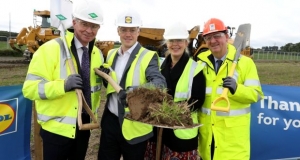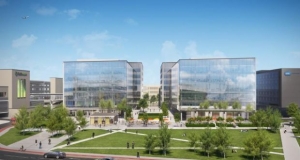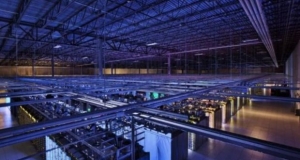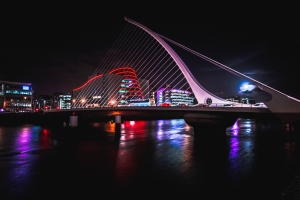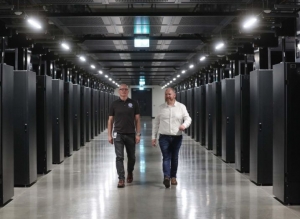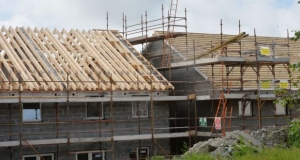Lidl’s new €100m Newbridge distribution hub to open in November 2019
ESRI doubles 2018 growth forecast for Irish economy
Kellogg's to relocate European HQ to Dublin Airport Central
How Ireland Is Fast Becoming The AI Island
Founded in 2015 by Romanian entrepreneurs Andreea Wade and Adrian Mihai, Opening is an AI-powered engine that is disrupting the talent acquisition space by enabling recruiters and HR professionals to ensure that the vital CVs are not overlooked.
Popertee
A Handheld Probe can Now Image Photoreceptors in Young Babies’ Eyes
Researchers have worked hard to try and develop a probe that is able to image the photoreceptors of the eyes in infants. This is a new development and it could actually help to identify any brain problems in younger children. It is based on adaptive optics and this new technology is really expected to make it much easier for both scientists and even doctors to observe the cells better than ever before. Those who work in industrial jobs or even in engineering jobs will know more than anyone what a fantastic advancement this is. The photoreceptors are actually specialised neurons and they comprise the light-sensing cells of the retina. The retina then sends signals back to the brain and all of this is done via the optic nerve. Studies have shown that diseases such as Alzheimer's and even Parkinson's have the ability to alter the retina and this is an incredible advancement to say the least.
Researchers often have to use adaptive optics to try and scan AOSLO and this is a non-invasive tool. It also helps to provide a much higher resolution of image when compared to an MRI and it even helps people to target the individual photoreceptor cells. When you look at big systems however you will soon see that they can be expensive and patients have to sit upright for several minutes. They also have to fix their eyes for several minutes as well and this is understandably hard for those who are of a younger age. There are hopes that this new technology is going to change all of that and it is well and truly incredible to say the least. Of course, if you want to find out more about this story then you can find any updates right here, as they happen.
Experts have Reacted to the No-Deal Notice
Dominic Raab is very keen to at least try and reassure the British public that BLT sandwiches are still going to be available. Some details that were found in the document however were much less comforting. It is noted that pharmaceutical companies are being advised to try and stockpile six weeks of additional medicine. It should also be noted that companies have also been advised that organic food retailers could see their produce being blocked to EU buyers for up to 9 months. Of course, there is no telling when this is going to end but some people have been advised to try and seek advice from the Irish government. They are going to try and help people to understand what preparations are required. Those who are in the UK have even been warned that they may lose their access to UK banking services as well and this could cause major problems in the future.
Those who work in engineering jobs or even in industrial jobs will know this more than anyone. A Brexit with no deal would be very bad for science. The question is of course, how bad. It is nice to see that the Secretary of State is going to reassure people about their sandwiches but it is not clear whether or not the UK is going to be a world-leading power in terms of their science potential. At the end of the day, collaboration requires a lot of different people and if the UK is limited in terms of the people who they can work with then this can only mean bad news. Of course, only time will tell whether advancements like this are going to keep happening in the future but for now, it is safe to say that things are not good.
The Race to Build the £300m Tower for Mitsubishi is Down to Three
If you work in engineering jobs or if you work in industrial jobs then you will know how important it is to try and get solid contracts from reliable providers. Of course, when you look at the bigger picture you will soon see that this is certainly the case for the Mitsubishi tower. It is able to provide security and that is why so many people are trying to offer their services so that they can facilitate its construction. CN understands that Sir Robert McAlpine, Mace and LendLease are the 3 firms that are left over and they are all trying to battle it out over the contract. They are going to try and build the 50-storey tower and this is going to be a huge build. The tower is going to be located at Bishopsgate and the new tower is being built by the company known as being the Mitsubishi Estate. They are in a partnership with another company known as Stanhope.
Mitsubishi Estate is one of the biggest developers in Japan and they are also responsible for making some of the biggest and tallest buildings in the world. This includes the Marunouchi Skyscraper. They have been working on the plans to try and build the biggest buildings in Japan and this is going to be a 390m tower. This is located near to the Tokyo main station. They have revised the plans and they have also secured permission so that they can have an additional 10 storeys as well. This is going to take place in October but there is no telling what else they have in the works. Of course, everything looks to be going ahead just fine and there is only a set period of time until a winner is announced.
Ireland- Is it Really the Land of Opportunity?
The Irish construction industry has halved in size and this happened when the global recession took hold nearly 10 years ago. The sector is somewhat recovering and those who work in industrial jobs and even engineering jobs will know this more than anyone. The output of the sector is standing at around 38 billion Euros and this is a staggering amount to say the least. The figures were described as being very bleak when you look at the annual report and they also found that the Irish economy really suffered as a result. When you look at the year 2012, you will soon find that the Irish market bottomed out and that the construction activity reached an all time low as well. The sector's annual output has lost 75% of its value in the last 5 years and this is not good news to say the least.
There is however a new project in the works and it is being brought about by Project Ireland. They have a 20-year pipeline and they also have hundreds and billions of Euros and this includes 116bn of investment infrastructures for 550,000 homes. They also have 2 billion Euros which is going to be put towards regenerating the five major cities and they are even planning a second runway for the major airports in Dublin. This is amazing news to say the least and you would be surprised at how much this can make a difference to the economy. That being said, this is planned for years ahead and right now the sector is recovering nicely. If things carry on going the way that they are then there is no telling what other progress can be made and this could mean that Ireland really is the land of opportunity.
Facebook’s €300m Irish data centre site is 100pc powered by renewable energy
As part of its community outreach – which has seen Facebook invest €2.5m in local projects in regions where it has facilities – the social network is inviting grant applications for projects in Meath aimed at strengthening the local community.
New State agency to free up land for ‘150,000 homes over 20 years’
The agency, to be announced by Minister for Housing Eoghan Murphy, will have €1.25 billion in funding and will seek to further assemble land banks into the future to ensure a consistent flow of house building.
It is claimed the agency will seek to remove land speculation and drive down the cost of land, which it is hoped will lead to cheaper house prices and increased availability. It will “smooth the peaks and troughs of Ireland’s land and housing market”, the Cabinet was told.


